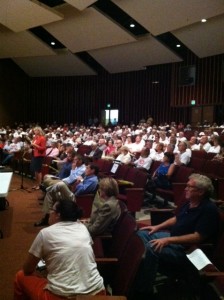Several attempts have been made during the past few years to get a PACE bill enated by the Indiana General Assembly. PACE stands for Property Assessed Clean Energy. So far these efforts have fallen short. The Hoosier Environmental Council (HEC) is making another attempt to rally support for an Indiana PACE bill.
A status of state PACE bills can be found on the DSIRE website. See http://www.dsireusa.org/documents/summarymaps/PACE_Financing_Map.pdf
Also see http://votesolar.org/policy-guides/rooftop-solar-policy-guides/pace-financing/
If you are interested in learning more about proposed PACE legislation that may be introduced in the Indiana General Assembly, please contact me: Laura.Arnold@IndianaDG.net or call (317) 645-1701.
A national webinar on Commercial PACE Programs was held earlier this month. See
Commercial PACE: Program Development and Implementation
ICLEI- Local Governments for Sustainability, in collaboration with The Solar Foundation, will
present a free webinar on “Commercial PACE: Program development and implementation” as
part of the U.S Department of Energy SunShot Solar Outreach Partnership.
This webinar will inform participants of the important aspects of Commercial PACE programs
that make them viable financing tools for state and local governments looking to support clean
energy use in condominiums, retail spaces, warehouses, and other commercial properties.
Speakers from Lean County, Florida, and Washington, DC, will discuss what logistical and
political obstacles they faced in developing their programs, how best to work with local
contractors, and what benefits can be derived from pursuing a Commercial PACE Program.
Speakers includeed:
Kristin Dozier, County Commissioner, Leon County, FL
Maggie Theriot, Director, Office of Resource Stewardship, Leon County, FL
Dave Good, District Department of Environment, DC
This webinar covers the important aspects of Commercial PACE programs that make them viable financing tools for state and local governments looking to support clean energy use in condominiums, retail spaces, warehouses, and other commercial properties. Speakers from Lean County, Florida, and Washington, DC, will discuss what logistical and political obstacles they faced in developing their programs, how best to work with local contractors, and what benefits can be derived from pursuing a Commercial PACE Program.
Speakers include:Kristin Dozier, County Commissioner, Leon County, FL Maggie Theriot, Director, Office of Resource Stewardship, Leon County, FL Dave Good, District Department of Environment, DC
 View the Webinar (.wmv, 70MB)
View the Webinar (.wmv, 70MB)
 View the Presentation Slides (.pdf)
View the Presentation Slides (.pdf)
News Release
Indianapolis, Ind. -- Business owners, operations and energy managers, clean energy component manufacturers and installers, and clean energy advocates across Indiana are invited to attend a free online workshop to learn more about ways Hoosier businesses can reduce their company’s rising energy costs and create new job opportunities in the clean energy sector. The midday workshop takes place Thursday, August 29, 2013 from noon to 1:00 p.m. (EST), with registration open now through the morning of the webinar at: http://www.hecweb.org/news-events/webinars/
Indiana has seen its energy costs rise significantly in the last ten years, from being among the lowest in the country to now in the middle of the pack. Webinar participants will learn about the tools -- current and prospective -- that will help lower their energy bills and also pave the way for more jobs in the clean energy sector in Indiana.
The online workshop will feature speaker Kris Wheeler, J.D., Energy Policy Adviser to the Hoosier Environmental Council, who has had more than 15 years of experience in the energy industry. Wheeler and other clean energy experts will particularly talk about Property Assessed Clean Energy (PACE) bonds, a way for commercial, agricultural, and industrial property owners to finance energy efficiency upgrades and on-site renewable energy projects with low interest rates and favorable terms. More information can be found at: www.PACEIndiana.org
"With rising energy costs and an unemployment rate that needs to be brought down, Indiana is a prime destination for greater investment in clean energy. Energy retrofits, in particular, will improve a company’s bottom line and differentiate a company from its competition, while creating more jobs in our state. This webinar will increase awareness of private sector and governmental tools available to Hoosier businesses for such retrofits along with highlighting a new financing tool, PACE, that’s available in all states in the Midwest other than ours."
According to the U.S. Department of Energy, buildings alone consume over 40% of the energy we use. And between 2001 and 2010, the average retail price of electricity in Indiana rose by almost 50%.
This free webinar is being sponsored the Hoosier Environmental Council and the Indiana Association for Community Economic Development.
Interested participants can register for free online at: http://www.hecweb.org/news-events/webinars/
###
About Hoosier Environmental Council:
Founded in 1983, the Hoosier Environmental Council (HEC) is the largest statewide environmental policy organization in Indiana. HEC aims to foster solutions that simultaneously improve environmental quality and economic well-being. Visit hecweb.org for more information. You can also follow HEC on Twitter: @hec_ed, or like us on Facebook: facebook.com/hecweb.
Source: Hoosier Environmental Council








 CREDIT: AP/Ed Andrieski
CREDIT: AP/Ed Andrieski